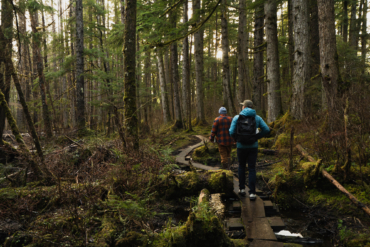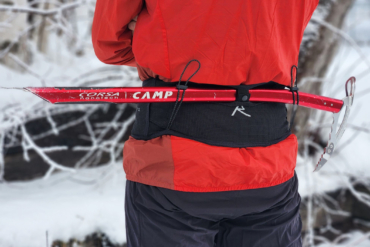From expedition-length events to 4-hour ‘sprints,’ the sport of adventure racing comes in many shapes and sizes. Here, we explore its various formats.
Editor’s note: This article was originally published on USARA.com and has been modified for GearJunkie.
It’s true that every racecourse will look different in AR, and each race director may have their own spin on a particular discipline. But the components and language are generally quite similar.
Unlike a running event, you can’t just show up at the start line of an adventure race and follow the markers. You need to understand how a course is laid out, what those complex instructions mean, and how to speak some basic language.
Among other things, adventure races vary in duration, terrain, and the endurance necessary to compete. They can also involve many different activities besides running and navigating, such as mountaineering, horseback riding, and even caving.
You don’t need to train 10-20 hours a week to participate in ARs that last a day or less. But for races that stretch longer than one day, you’ll likely need to do intensive training to make it to the end.
Read on for a breakdown of adventure race types and structures to choose the right one for you — or just to learn more about this fascinating sport.

Adventure Race Types
The first thing to figure out is what sort of race you’re getting into. Adventure races tend to fall into one of three primary categories: sprint races, one-day events, and multiday expedition races.
Ask 10 adventure racers what constitutes a sprint race or how long a race must be to be considered an expedition, and you’ll likely get 10 different answers. One of those racers will also insist that it’s not an adventure race at all unless it takes 10 days to finish, includes leeches and flesh-eating bacteria, and is situated in the jungles of Fiji.
Don’t get sucked into this banter: Pick a race that feels manageable to you. If 6 hours is enough, seek out your local sprint. If 12 feels manageable, visit the USARA calendar to see what’s in your region. You’re an adventure racer regardless of the length of the event! As you figure out what makes the most sense for you, consider these key differences.
Sprint Races
Typically, sprint races tend to be shorter events, usually with a maximum duration of 6-8 hours. (Adventure races tend to be defined by their duration rather than distance, as navigation, route choice, and strategy can radically alter the length of any given team’s race compared to what the race director intends.)
Many sprint races are billed as beginner-friendly events, and some have special divisions to encourage families to come race as a team. Such events are usually hosted in local parks that are more accessible to beginners. Odds are good that you’ll never be far from a trail, there won’t be any massive climbs, and you could jump into one with relatively little training.
Don’t be deceived, though. Teams coming to compete are fast, and racing at the pointy end of these events can be harder than competing in a longer event. Navigation can still be quite tricky, and mountain biking can be technical. Still, the challenges tend to come and go before you know it, and a good attitude is usually all you need.
Twenty years ago, these sorts of events were hard to find, and many adventure racers jumped into the deep end with Eco-Challenge or another major expedition as their first race. Now, sprint races tend to be a great way to enter the sport; they are more affordable and much less gear-intensive.
And unless you want to take a shot at winning, these races really can be completed by anyone with the basic skills and the right attitude as long as they have a basic level of endurance fitness.
One-Day Races
Some purists argue that you’re not adventure racing until you’re 5 days in. But a 12- to 36-hour event really will give you more of a “true” AR experience than a sprint race.
Stages in one-day races are more than a rapid-fire run around a local park. Race directors can take you to more interesting, wild, and challenging environments. And in most events, you at least contend with dusk or dawn, if not outright nighttime racing. Your body will be taxed, and you’ll have to contend with more of the mental challenges that make adventure racing unique.
Of course, once you cross that 12-hour threshold, you’re typically faced with a night of racing and the hurdles that come with sleep deprivation, prolonged nighttime navigation, and the challenges of managing your team. At some point, someone will likely bonk, slow down due to the normal aches and pains that accumulate over 12-24 hours of racing, or struggle with sleepmonsters (see the USARA glossary for extensive explanations of AR lingo).
While these events can feel daunting, they’re more accessible than you might think. Fewer people can jump off the couch and get through them than they do a sprint AR. But the fact that you’re changing disciplines and that the pace tends to be slower means that you still don’t have to be a professional athlete training 10-20 hours a week to complete a one-day event.

Expeditions
Anything over a day, and you’re entering into the realm of expedition races. It should be noted that defining races that are in the 36- to 48-hour range is challenging. They’re unique, as they provide additional challenges beyond the one-day event, but they don’t quite fit into the expedition race category either. Some would even argue that a race isn’t a true expedition race unless it’s a minimum of 3 days long, or even 4.
Regardless, expedition races are the pinnacle of the sport. Most participants never experience a true expedition race. But for those who make this final leap, they get to experience adventure racing as it was originally conceived.
That means epic courses, covering massive swaths of terrain, complete with varied ecosystems, and additional disciplines like caving, advanced ropes work, mountaineering, or horseback riding. It also entails unique strategic considerations including sleep strategy, dark zones, and body and gear management that transcends what’s necessary to complete a shorter event.
Expedition races tend to be less accessible to the less-experienced competitor, with steeper entry fees, significant travel expenses and logistics that can be daunting, more robust gear requirements, and a need for more expertise to remain safe — and simply finish.
Anyone can get off a couch and complete a sprint race, and most competitors can work their way through a one-day event. But it’s considerably more challenging to finish an expedition race, at least those at the level of an Adventure Race World Series event or an Eco-Challenge. It’s not unheard of for a rookie team to finish these races. But, more often, less-seasoned teams end up on significantly shortened courses or fail to reach the finish line.
This isn’t to say that less-experienced teams shouldn’t consider signing up for one of these epic adventures. However, this is where setting realistic goals, doing your homework, and gaining as much experience as possible through one-day racing can really impact your experience.

Race Structure
All adventure races are broken into stages, sometimes referred to as “sections” or “legs.” These stages typically revolve around one of the core disciplines of adventure racing: mountain biking, paddling, or running/trekking. All generally include navigation, ranging from beginner to advanced levels of terrain management and map-and-compass work.
Of course, there’s significant variety within these disciplines. For example, a biking section could include large stretches of paved roads, nothing but singletrack trail, or extended hike-a-biking. A paddle leg could see you in a sea kayak in the open ocean, rafting through class V rapids, or flatwater canoeing on a starry night.
Stages can be arranged in any order, and there can be as many stages as the course design demands or allows for. Shorter races tend to have fewer stages than expedition events, but that’s not always true. Some short, urban events have 10 or more stages, and some 10-day races have been divided into five stages or fewer.
Occasionally, stages are designed in such a way that they require teams to participate in multiple disciplines within a single stage. There might be an embedded foot section within a bike stage, a detour off the water to complete an ascent and rappel, or a caving section within a long trek.
What tends to be true regardless of the layout of the event is that each stage will include checkpoints that need to be found while on that stage. In between stages, teams usually check into a transition area, and there you usually have access to your gear.
Once you have completed a stage, you rarely can return to that stage to find a missed checkpoint. Whatever the format of the race, this is one of the characteristics of adventure racing that makes it so fun and exciting. With few exceptions (the local race director that uses the same park year after year and doesn’t mix the course up much), every race feels like a unique, unexplored adventure.
This article is sponsored by Toyota. Find out more about the 2022 Toyota Tundra online.













